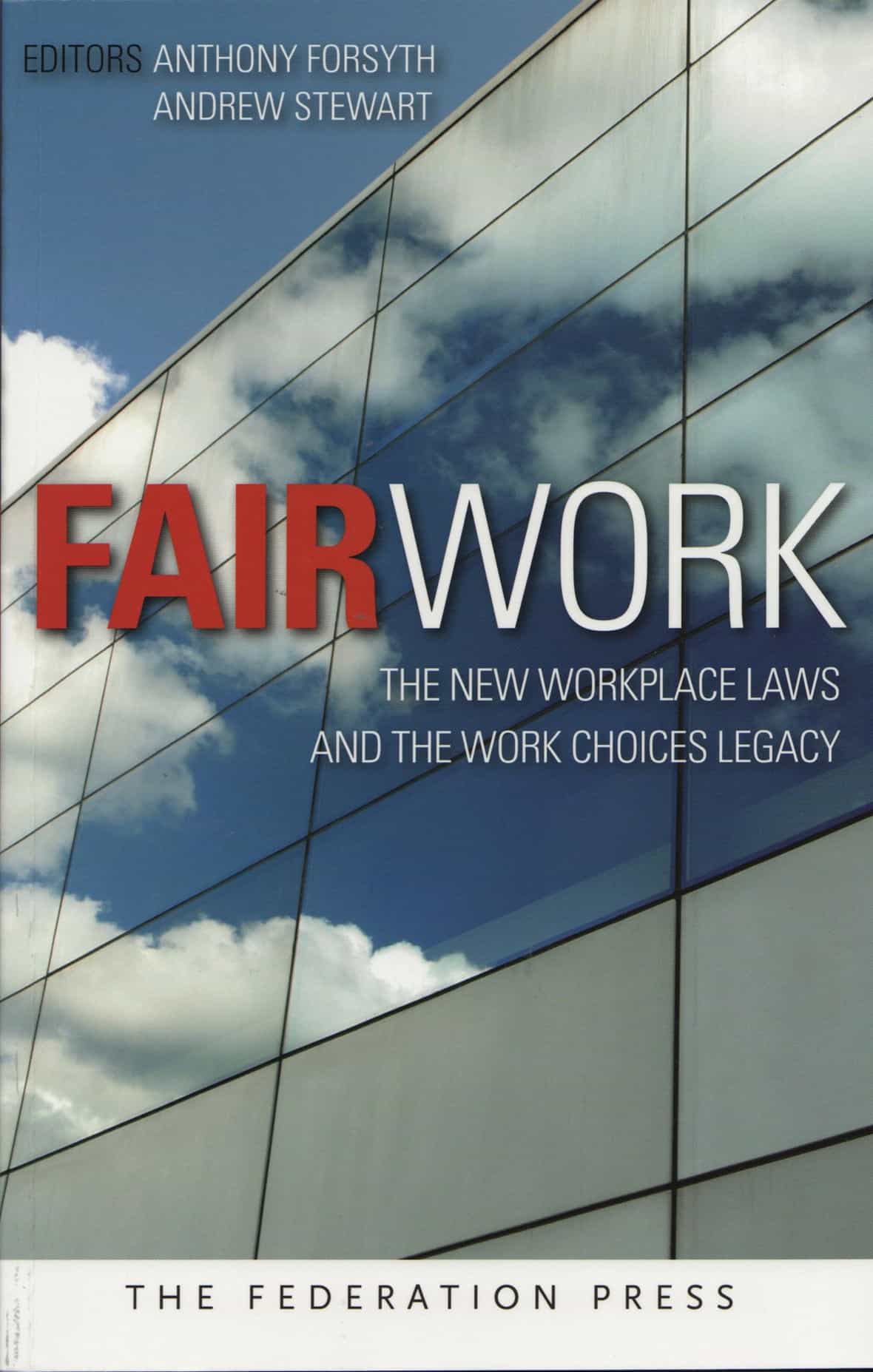On 9 July 2009 I wrote in SafetyAtWorkBlog
“The Fair Work Act has no relevance to occupational health and safety, so why mention this on SafetyAtWorkBlog?”
The Fair Work Act changes the negotiating and consultative structure of Australian workplaces stemming from changes in industrial relations law.
 A book that came across my desk this morning suggests several other overlaps of OHS and IR in the new regime. Federation Press sent a copy of “Fair Work – The New Workplace Laws and the Work Choices Legacy“, a book edited by Anthony Forsyth and Andrew Stewart.
A book that came across my desk this morning suggests several other overlaps of OHS and IR in the new regime. Federation Press sent a copy of “Fair Work – The New Workplace Laws and the Work Choices Legacy“, a book edited by Anthony Forsyth and Andrew Stewart.
In Andrew Stewart’s chapter he talks of how the New South Wales Industrial Relations Commission made several extreme rulings on the application of State OHS laws to federal employees. He states that the government of Kevin Rudd has progressed OHS legislative reforms considerably by the government has “not indicated any interest in taking over the field itself”. The reticence has seemed strange and I was one of those who tipped a greater role for Comcare as a body for national OHS oversight.
Stewart has interpreted the government’s suspension of Comcare licences for national workers compensation coverage as illustrating the government’s interest lies
“in streamlining workers compensation for multi-State employers, rather than imposing a national regime”.
Ron McCallum is an Australia labour academic who always demands attention. Stewart includes a particularly salient reference
“Ron McCallum, for example, has argued that labour laws that are centred around corporations are unlikely to retain a ‘wholesome’ balance between employers and employees. Ultimately, he suggests, such laws are likely to become ‘little more that a sub-set of corporations law because inevitably they will fasten upon the economic needs of corporations and their employees will be viewed as but one aspect of the productive process in our globalized economy.”
The path to fairness is likely to continue to be rocky even during the terms of a government that originated from the labour movement.
NES
Jill Murray and Rosemary Owens write a chapter focusing on the Safety Net, a set of legislated minimum standards – National Employment Standards (NES). These standards are not “lines in the sand” and have purposely been given inherently flexibility. One of the issues discussed by Murray & Owens is maximum working hours.
This is particularly important to those of us who are trying to manage the issues of fatigue and impairment in workplaces. The authors state that it remains between the employer and employee to determine what hours, additional to the 38-hour working week, are “reasonable”. Some of the relevant safety factors in determining reasonableness are listed as
- “Occupational health and safety risks”
- “Personal circumstances, including family responsibilities”, as well as
- “Needs of the workplace or enterprise” and
- “any other relevant matter.”
Murray & Owens say that to determine reasonableness is almost impossible to negotiate between individuals because there is no priority allocated to each of the eleven criteria. The authors say
“… this kind of conflict is exactly what the provision must confront: a business might have urgent demands on production, yet an individual worker has to get home to cook tea for the family.”
Murray & Owens go on
“By placing the potential to expand working hours in the hands of the parties at the workplace, the NES, like WorkChoices, really mean that whoever holds the greater power (and, perhaps, knowledge of their rights) is likley to prevail, notwithstanding any calculation of reasonableness.”
Here is the opportunity for the union movement to generate additional members and in an industrial relations climate that allows fro greater access to employees. It is rare to find any individual who understands their own employment rights sufficiently to negotiate by and for themselves. The union movement could again become the “Friend of the Workers” by actually being the friend of workers and doing some solid footwork.
The Fair Work book is far more than this short article indicates. I only received the book this morning but am promising myself that I will read the rest.
As safety management broadens itself to cover psychosocial risks, it increasingly overlaps industrial relations, a workplace element that, with luck and a bit of work, could have been avoided by OHS professionals in the past. That is no longer the case and OHS professionals must understand how industrial relations changes will affect their own workplace and how they do their jobs. The Fair Work book is a great place to start.

Can i invite you to contribute an article on the Fair Work Act on http://www.findingalawyer.com.au? Hope to hear from you.
Cheers,
Ben
Ben
Thanks for reading the blog. I am glad you think the piece is worthy of seeking a contribution.
As I mentioned when you called, if you are willing to pay for an article from me, I am happy to oblige, as that is part of my job. Otherwise, please keep reading SafetyAtWorkBlog.
Kevin